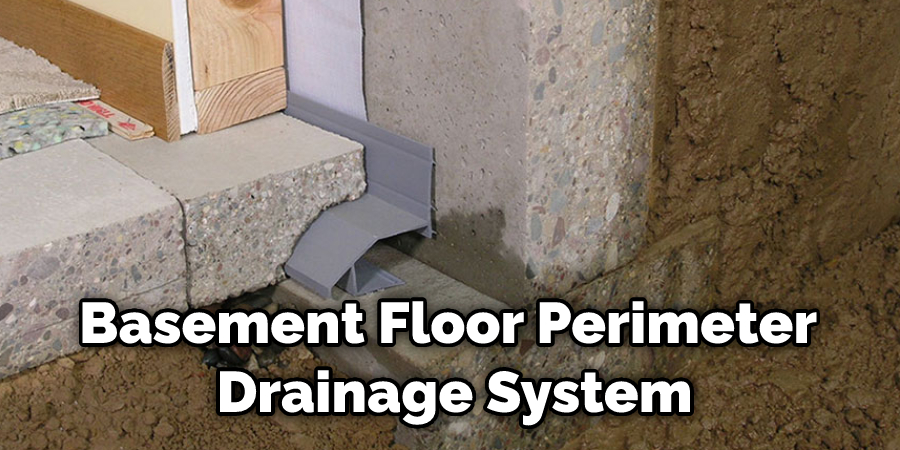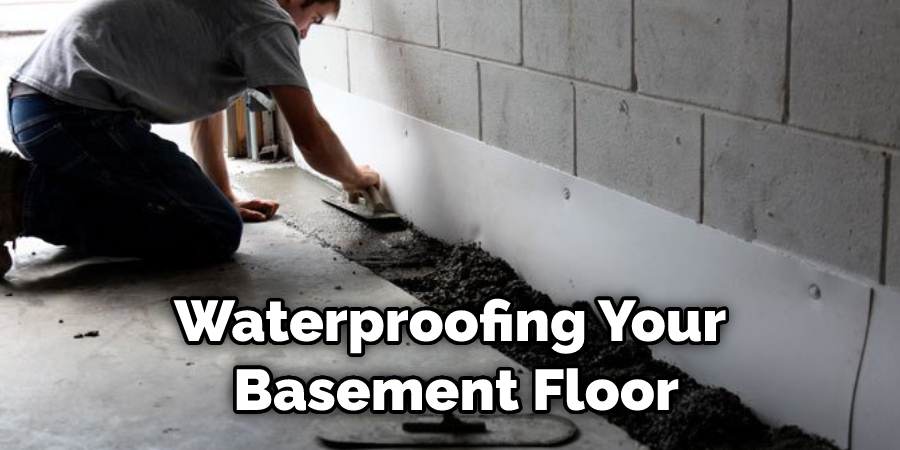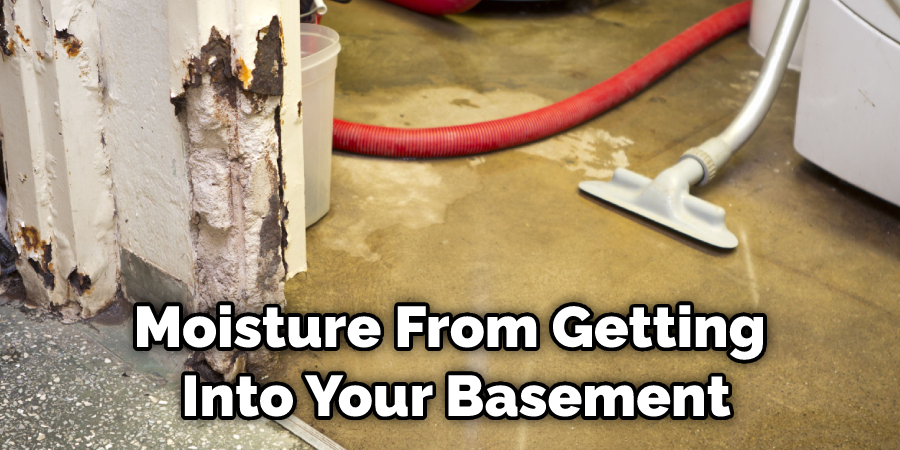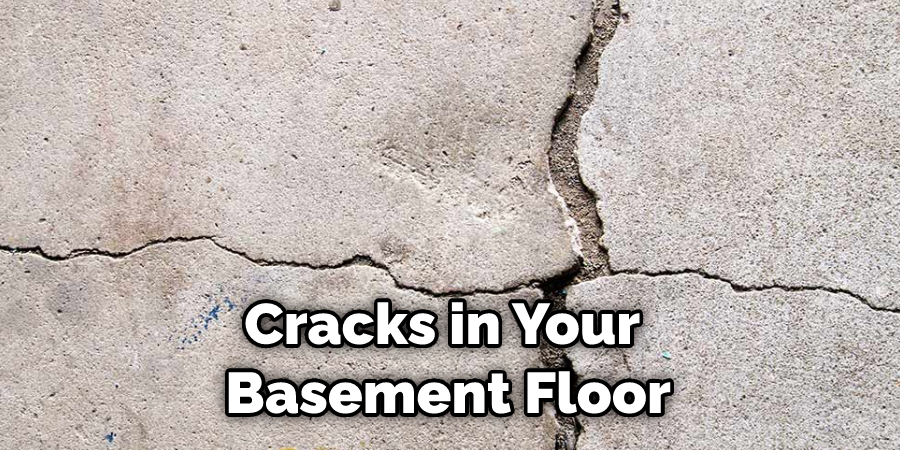The water table causes hydrostatic pressure on a basement floor higher than the basement floor level. This can cause water to seep into the basement through concrete cracks and damage foundation walls and flooring.
There are several ways how to fix hydrostatic pressure on basement floor, depending on the severity of the problem. In most cases, fixing hydrostatic pressure simply requires installing a drainage system that will channel water away from the house. Read on for more information.

What Is Hydrostatic Pressure?
The pressure of a fluid (in this case, water) on a surface is called hydrostatic pressure. This pressure is caused by the weight of the water above the surface. When the water table is higher than the level of the basement floor, hydrostatic pressure can cause water to seep into the basement through cracks in the foundation.
Water seeping into your home through cracks in the foundation may not seem like a big deal, but it can actually cause major problems. Mold growth can occur, which can cause health problems for people with allergies or respiratory conditions. In addition, the foundation’s structure can be damaged, and the home itself can be damaged by water.
Why It’s Important to Fix Hydrostatic Pressure on Basement Floor?
Hydrostatic pressure is the force that water exerts on objects in contact with it. This pressure increases with depth due to the weight of the water above. Water also exerts pressure on basement walls and floors, leading to cracking or even collapse if the pressure becomes too great.
If your basement has hydrostatic pressure, this means that there is water pressure pushing against the walls and floors. This can cause damage to your home, so it’s important to take action to relieve the pressure. The most common way to do this is to install a sump pump, which pumps water out of the basement and away from the foundation. You can also try installing an interior drainage system or exterior waterproofing.
10 Ways on How to Fix Hydrostatic Pressure on Basement Floor
1. Install a Perimeter Drainage System:
If your basement is surrounded by soil that has a high water table, the best solution is to install a perimeter drainage system. This will keep the water away from your home and allow it to drain harmlessly into the sewer system. The perimeter of the drainage system can be installed by excavating outside your home and installing a drain pipe that goes around the perimeter of your basement, connected to a sump pump.

2. Install an Interior Drainage System:
If your basement is not surrounded by soil or if the water table is not too high, you can install an interior drainage system. This involves excavating around the inside of your basement walls and installing perforated pipes that will carry water away from the basement and into a sump pit. The sump pit needs to be equipped with a pump that will automatically remove the water and discharge it outside your home.
3. Repair Any Cracks in Your Basement Floor and Walls:
Water can seep into your basement through cracks in the floor or walls. To prevent further water damage, it is important to have these repaired as soon as possible. Epoxy or polyurethane sealants can be used to repair cracks, and can be found at your local hardware store. If the cracks are large, you may need to hire a professional.
4. Install a Sump Pump:
A sump pump is a great way to remove accumulated water in your basement. It is installed in a sump pit, usually located in the lowest part of your basement. The sump pump will remove water from the pit and send it outside, away from your home. When installing a sump pump, follow the manufacturer’s instructions carefully.
5. Waterproof Your Basement Walls and Floors:
Waterproofing your basement will help to keep water out and prevent future flooding. There are several ways to waterproof your basement, such as using waterproof paint or sealant, installing a drainage system, or having a professional do it for you. Be sure to repair any cracks or leaks in your basement before waterproofing to prevent further damage.

6. Improve Your Home’s Landscaping:
Improving your home’s landscaping is one of the best ways to prevent hydrostatic pressure from becoming an issue. In addition, ensuring that your home’s foundation is graded correctly can help prevent water from pooling around your home and putting unnecessary pressure on your basement walls. Checking your home’s gutters and downspouts is also important, as clogged gutters can cause water to back up and seep into your basement.
7. Use a Dehumidifier:
If you live in an area with high humidity, using a dehumidifier can help to reduce the amount of water in the air and prevent it from seeping into your basement. Be sure to empty the dehumidifier’s reservoir often to prevent it from overflowing and causing water damage. If you see the hydrostatic pressure has already caused water to seep into your basement, using a wet/dry vacuum can help remove the water quickly and prevent further damage.
8. Ensuring a Positive Grade:
One of the most important things you can do to prevent hydrostatic pressure is to ensure your home has a positive grade. This means the ground slopes away from your foundation rather than towards it. If you have a negative grade, water will pool around your foundation and put unnecessary pressure on your basement walls. So when you’re landscaping your property, be sure to grade it so that water will run away from your home.
9. Adding Gutters and Downspouts:
If you don’t already have gutters and downspouts installed on your home, now is the time to do it. Gutters help to redirect rainwater away from your foundation, and downspouts carry the water even further away. This will help to alleviate some of the hydrostatic pressure that is putting strain on your basement floor.
You Can Check It Out To Fix Air Leaks Around Doors
10. Caulking and Weatherstripping:
Check the caulking and weatherstripping around your doors and windows. If cracks or gaps exist, seal them with caulk or weatherstripping. This will help to prevent moisture from getting into your basement. When moisture enters your basement, it can cause problems with hydrostatic pressure. So make sure that your caulking and weatherstripping are in good condition.

Additional Tips To Prevent Hydrostatic Pressure on Basement Floor
- Check for cracks or gaps in the foundation that could allow water to enter.
- Install a French drain or other types of drainage system around the home’s perimeter to collect and remove water from the soil before it has a chance to seep into the basement.
- Ensure all gutters and downspouts are clean and in good working order to channel water away from the house effectively.
- Slope the ground away from the foundation to encourage water to flow away from home.
- Add an extension to downspouts to ensure that water is being discharged at least 10 feet away from the foundation.
- Cover exposed soil with mulch or another type of ground cover to help prevent water from seeping in.
- Consider installing an interior drainage system within the basement to collect and remove water that has already infiltrated the space.
You Can Check It Out To Fix High Head Pressure
How Does Hydrostatic Pressure Impact Your Basement?
Hydrostatic pressure is the force that water exerts on objects at rest. This pressure increases as the depth of the water increases. When hydrostatic pressure becomes too great, it can cause problems with your basement floor. There are two main ways that hydrostatic pressure can impact your basement: through the soil around your home and cracks in your basement floor.

The soil around your home is constantly absorbing and releasing water. When the soil becomes oversaturated, it can pressure your foundation and cause cracking. Cracks in your basement floor can also be caused by hydrostatic pressure. If there is too much pressure on your basement walls, they can start to crack and leak water. If you have a basement, it’s important to be aware of the potential for hydrostatic pressure.
You Can Check it Out to Fix Leaking Basement Window Wells
Frequently Asked Questions
Do You Get Rid of Hydrostatic Pressure?
You definitely get rid of hydrostatic pressure when you empty your bladder. However, it’s important to bear in mind that not all fluids are the same. Sweat and urine each have a different concentration of salt and other minerals which can cause discomfort if they’re not flushed away properly. Furthermore, excess fluid retention can lead to various health conditions such as bloating, weight gain, and heart disease.
Will a Sump Pump Help With Hydrostatic Pressure?
A Sump Pump can help to reduce hydrostatic pressure, but it is not necessary in order to keep your home safe from flooding. In fact, a lot of people mistake the function of a Sump Pump for that of a water pump. A water pump removes moisture from pipes and ductwork while gravity helps to flush away waste products like feces and dirty water.
A Sump Pump is different because it takes in excess drainage from below ground level (or below the floor of an underground room or structure) and pumps it back up into the soil or another area where it will be eliminated. This process helps mitigate against potential flooding by catching any rainwater that falls before it reaches your foundation or groundwater supply.
So if you’re wondering if a Sump Pump will help with Hydrostatic Pressure, the answer is yes – but only if you actually have hydrostatic pressure build-up inside your home!
What is Hydrostatic Pressure in a Basement?
Hydrostatic pressure (Hp) is the pressure exerted by a fluid (liquid or gas) at a fixed point in its container as the container is filled with more fluid. The higher the Hp, the greater the pressure at that point. It is expressed in pounds per square inch (psi).
Does Flex Seal Work on Basement Floors?
Yes, Flex Seal is a great product for basement floors. It seals the floor to ensure that moisture and dust don’t get into the underlying soil, which can cause damage over time. Additionally, it prevents mold and mildew from growing, both of which are harmful to your health.
The sealant is also effective in protecting concrete against sun exposure and acids that may corrode the surface over time.
You Can Check It Out To Fix Bubbles in Cured Epoxy Floor
Final Words
Basement waterproofing is a process that can protect your home from water damage. One of the most common methods for basement waterproofing is to fix hydrostatic pressure on the basement floor. This can be done in a few ways, but all require preparation and work.
In this blog post, we have discussed how to fix hydrostatic pressure on basement floor and what you can expect from the process. If you are experiencing water problems in your basement, it is important to address them as soon as possible. Not only can water damage your home, but it can also be dangerous for you and your family.
Basement waterproofing may seem like an expensive or difficult task, but it is well worth the investment to protect your property and keep your family safe. Please contact us if you have any questions about basement waterproofing or fixing hydrostatic pressure on your basement floor. We would be happy to help you find the best solution for your home.
